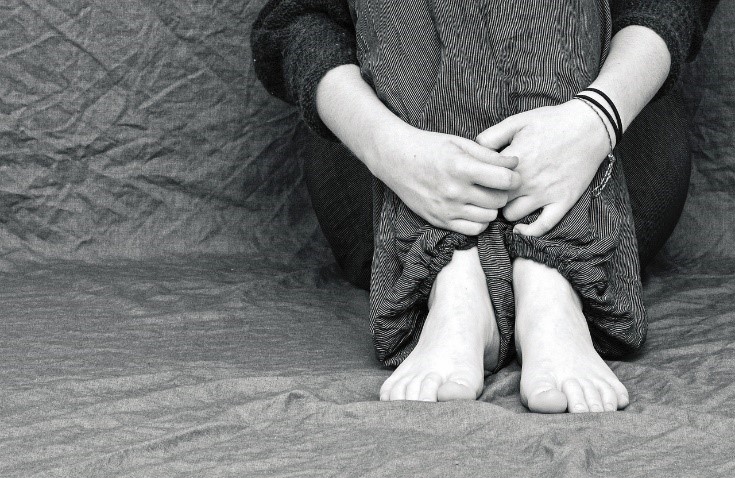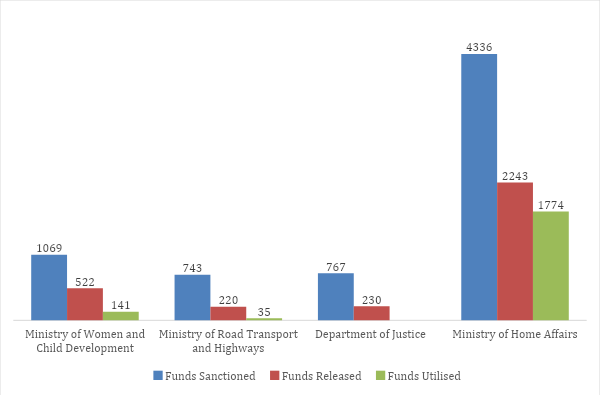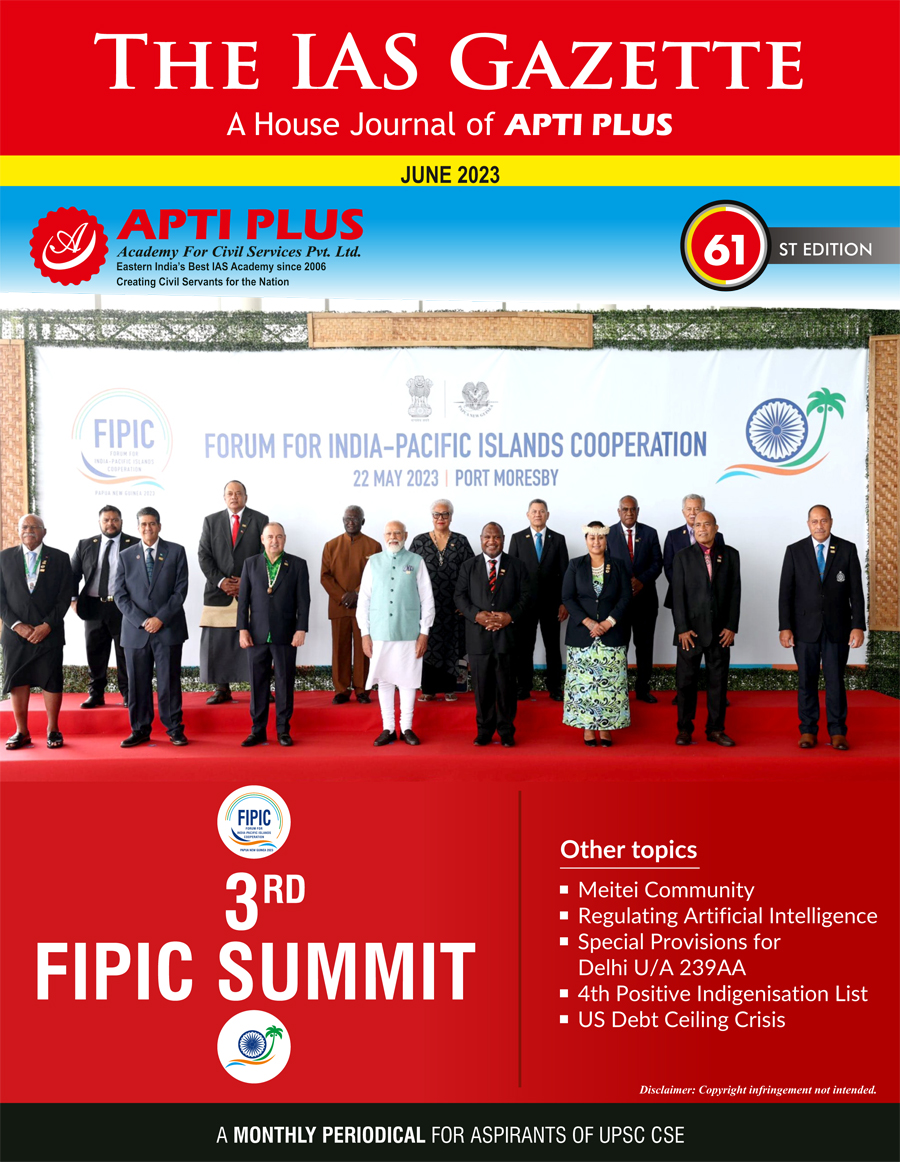
Disclaimer: Copyright infringement not intended.
Context
- The Centre is coming up with a scheme for the medical and legal aftercare of rape and gang rape survivors in POCSO cases if they are abandoned by their families.
Details
Umbrella Scheme
- The new scheme, is launched under the aegis of the Nirbhaya scheme.
Aim
- The scheme aims to ensure both infrastructural and financial support for minor pregnant victims who have no means to fend for themselves.
- The scheme aims to facilitate immediate, emergency and non-emergency access to a range of services including access to education, police assistance, counseling, legal support, and insurance cover for the girl child victim and her newborn under one roof.
Fund
- An amount of ₹74.1 crore has been allocated for the same.
Administration
- The Government has leveraged the administrative structure of Mission Vatsalya in collaboration with State governments and Child Care institutions [CCIs] to actualize this support to minor victims.
Beneficiaries
- The new scheme covers minor girls who are victims of penetrative sexual assault and aggravated penetrative sexual assault.
Age Bar
- The new scheme would be available for girls up to the age of 18 years at the level of childcare institutions and for women up to 23 years at aftercare facilities.
Service
- Along with legal aid, the girls, who have been abandoned by their family due to forced pregnancy, either due to rape, or any other reason, and have no means to support themselves, will also be provided with safe transportation for attending court hearings.
- The medical benefits available to beneficiaries of the scheme include maternity, neonatal and infant care.
- Separate space will be allocated at the child care homes for the scheme’s beneficiaries as her needs would be different from other children residing there.
- A caseworker will be appointed for taking care of the rape victims and separate funds shall be provided by the Centre to the childcare home sheltering the scheme’s beneficiaries.
Formalities
- It is not mandatory for the girl child victim to produce a copy of the FIR for availing of the benefits under the scheme.
- However, the persons responsible for the implementation of the scheme need to ensure that the police are informed and an FIR is registered.
READ ALL ABOUT POCSO ACT: https://www.iasgyan.in/daily-current-affairs/pocso-act-12#:~:text=About-,The%20Protection%20of%20Children%20from%20Sexual%20Offences%20(POCSO)%20Act%20was,stringent%20punishments%20for%20the%20perpetrators.
READ ALL ABOUT MISSION VATSALYA: https://iasgyan.in/daily-current-affairs/mission-vatsalya-scheme

NIRBHAYA SCHEME
About
- In a bid to counter abuses against women and girls, Nirbhaya Fund was announced in 2013 Union Budget.
Fund
- The fund was started with a corpus of Rs 1,000 crore.
Administration
- The Fund is administered by Department of Economic Affair (DEA) of the Finance Ministry.
Nodal Agency
- The Ministry of Women and Child Development is the nodal agency for Nirbhaya Fund, though schemes are implemented by several Union ministries, state governments and other agencies, including non-government outfits.
Schemes under Nirbhaya Fund
Ministry of Women and Child Development:
Ministry of Women and Child Development has initiated three schemes under the Nirbhaya Fund. They are:
- One Stop Centre: These are popularly known as Sakhi Centres. The scheme began to function across India from April 2015. The scheme aims to establish centres to facilitate women who are victims of violence. The Centres provide first aid, medical aid, police assistance, legal aid and counselling support. About 186 centres will be made operational by July, 2017.
- Universalisation of Women Helpline: The Department of Telecommunication has allocated the number 181 for women helpline. As of now, Women Helplines are already operational in 18 States/UTs. These helpline numbers will link the One Stop Centres being established under the Nirbhaya Fund.
- Mahila Police Volunteer scheme: Mahila Police Volunteers (MPVs) is envisaged to act as a link between police and community and help women in distress. Haryana has become the first state to start this scheme in December, 2016. Other States are expected to follow suit.
Schemes Of Ministry of Home Affairs:
- Emergency Response support System: Emergency Response Support System (ERSS) envisages an integrated computer aided emergency response platform that aims to ensure speedy assistance to the distressed persons.
- Central Victim Compensation Fund: Central Victim Compensation Scheme (CVCF) has been framed under section 357A of CrPC. Under this initiative a Corpus Fund will be disbursed to States/UT to facilitate States/UTs in providing compensation to the victim (including survivors of rape and acid attack) or her dependents who have suffered loss or injury as a result of the crime.
Schemes of Ministry of Railways:
- Integrated Emergency Response Management System: This will provide round the clock security to women passengers in 983 Railway Stations across the country by strengthening of security arrangements of Railways with Security Helpline, Medical Facilities, RPF and police, installation of CCTV cameras, etc.
- Abhaya Project Proposal (Andhra Pradesh): Abhaya Project is a proposal proposed by Andhra Pradesh for ensuring the safety of Women and Girl child during the transport (auto rickshaw).
- CHIRALI-Friends Forever (Rajasthan): Under this scheme, Community Action Groups in 7 districts of Rajasthan has been constituted for a period of three years from 2016-17 to 2018-19 to create an enabling environment to support girls and women to move freely and make use of opportunities for their overall well being.
Performance of the Nirbhaya Scheme
Prolonged underutilisation
- A publication, ‘In Search of Inclusive Recovery’ by the Centre for Budget Governance and Accountability, says, “As of 2021-22, Rs. 6,213 crore have been allocated to the Nirbhaya Fund since its inception, of which Rs. 4,138 crore have been disbursed and only 2,922 crore utilised, indicating that more than half of the total funds remain unutilised.”
- Approximately 70 per cent of the fund has been reported to be utilised.
- 30 per cent of the fund remains unutilised, due to various factors such as time taken in getting required approvals from competent authorities, procedure to be followed for award of contract, disruptions due to unforeseen reasons such as one created by Covid are the main reasons for the delay.
- Under-utilisation of the fund shows that there is lack of commitment for women security in the government. There is mismanagement of the fund and that is why it has not been utilised till now.
- Government data shows that a number of states have not utilised the Nirbhaya Fund which is meant for the safety of women. States like Maharashtra, Manipur, Meghalaya, Sikkim, Tripura and Daman and Diu have not shown much utilisation of the fund at all even though the home ministry allocated Rs 18,292 lakh to them.
Sanction, release and utilisation of Nirbhaya Fund
Figures as of 2021 in Rs crore

Source: Compiled from data reported by the Ministry of Women and Child Development, 2021 and 2020. Note: The figures reflect cumulative amounts from the time of approval until 2020-’21.
Misappropriation of Fund
- Recently, the state of Maharashtra was at the centre of a controversy over the misappropriation of money under the Nirbhaya Fund. Media reports indicated that vehicles bought by the state government through the Nirbhaya funds were diverted off for providing Y-plus security to MLAs in the state.
Quantum of Fund
- The quantum of funds released is itself a small proportion of total funds approved for the schemes and projects.
- For instance, just under half the sanctioned funds for Ministry of Women and Child Development schemes have been released, and of the released amount, only 27% has been utilised.
- Of funds released from Ministry of Women and Child Development, West Bengal, Puducherry and Lakshwadeep have reported zero utilisation.
Issue of Fund release
- Haryana, which was the first to implement the Mahila Police Volunteer scheme, is the only state to report 100% utilisation. Although the scheme was supposed to be taken up by all states after its pilot, in 2020-’21, only 13 states/Union Territories reported any fund release from the Ministry, and nine of those states reported zero utilisation.
Limitations in design
- The projects proposed under Nirbhaya Fund are required to have the following features: “optimum use of existing infrastructure” and “innovative use of technology”, apart from directly impacting the safety concerns of women. These guidelines appear to encourage low-cost interventions oriented towards surveillance, and reporting and investigation of crimes.
- Such interventions lead to an inordinate focus on urban crimes in public spaces, whereas most violence against women occurs in domestic spaces. Few of the approved projects involve the provision of medical, legal and counselling services to women in distress, or seek to address the structural causes of gender-based violence.
Moving Ahead
- Budgeting and planning processes must be informed by a deeper understanding of violence against women. The guidelines governing the use of the Nirbhaya Fund should be broadened to incentivise interventions in other areas, such as education, health, sanitation, public infrastructure and economic empowerment of women. For instance, Kerala, in its Gender Budget for 2021-’22, has allocated resources for medical care for women victims of violence, gender awareness in police stations and basic amenities in public places for women.
- A shift in approach is required towards preventing crimes against women, with a focus on behaviour change and sensitisation.
- Central ministries and states can be provided training on how to design and implement projects in these domains, in alignment with their specific needs.
- Annual allocations for the Nirbhaya Fund should be increased progressively so that existing projects can be strengthened and new projects in a wider range of domains can be financed.
- Given that this fund is limited, we must ensure that 100 percent of the money is utilised to assist women. The Ministry of Home Affairs can be given a separate budget for police reforms and part of those expenses can feature in the Gender Budget statement, as an overall commitment to increase safety for women.
|
PRACTICE QUESTION
Q. The Government must take concerted steps in making systems more responsive to the needs of the victims of gender-based violence. Discuss in the context of Nirbhaya Scheme.
|

https://epaper.thehindu.com/ccidist-ws/th/th_delhi/issues/42233/OPS/G9EBEHU3B.1+G94BEINJN.1.html





